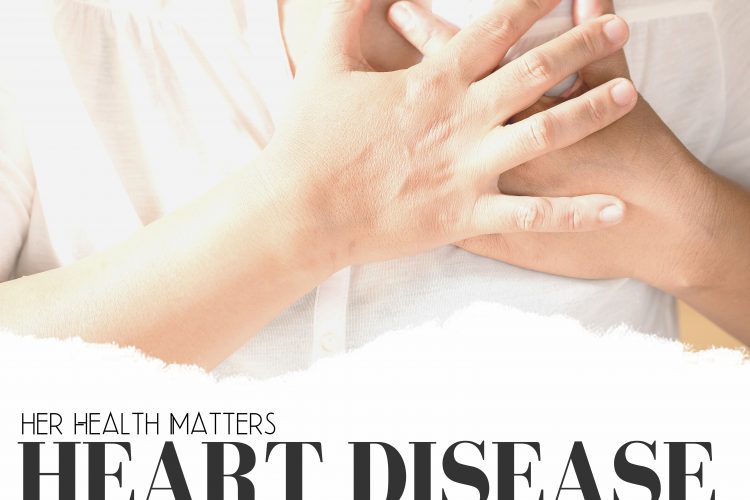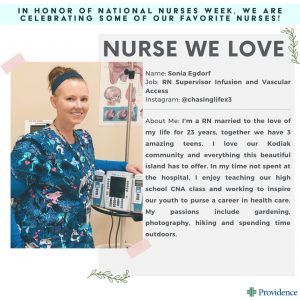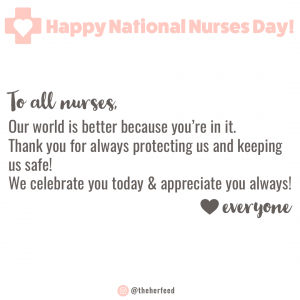Her Health Matters: Heart Disease
- Health & Wellness
- Mar 02, 2020
This month’s Her Health Matters (in partnership with Providence St. Joseph Health) discusses heart disease. Heart disease is the leading cause of death for women in the United States so it’s important that we not only raise awareness about heart disease but we understand what it is so we know how to best prevent it.


What is heart disease?
Heart disease describes a range of conditions that affect your heart. Diseases under the heart disease umbrella include blood vessel diseases, such as coronary artery disease; heart muscle problems leading to heart failure; heart rhythm problems (arrhythmias); and heart defects you’re born with (congenital heart defects), among others.
The term “heart disease” is often used interchangeably with the term cardiovascular disease (CVD). Cardiovascular disease generally refers to conditions that involve narrowed or blocked blood vessels that can lead to a heart attack, chest pain (angina), stroke or exertional leg pain. Other heart conditions, such as those that affect your heart’s valves are also considered forms of heart disease.
Clinical research has revealed men and women often have different presentations for cardiovascular disease. This includes sex differences in terms of symptom presentation, in diagnostic imaging and in lab values. This may result in poor outcomes for women whose symptoms do not match the classic presentations in males suffering from coronary ischemia. This can lead to female cardiac issues going undiagnosed or misdiagnosed, accentuating a need for new approaches in diagnosing and treating women. At the same time, these discoveries have underscored a public health concern for women with CVD.

Heart Disease Statistics
- Heart disease is the leading cause of death for women in the United States, killing 299,578 women in 2017—or about 1 in every 5 female deaths.
- Almost two-thirds (64%) of women who die suddenly from coronary heart disease exhibit no diagnosed symptoms.
- Heart disease is the leading cause of death for African American and Caucasian women in the United States. Among American Indian and Alaska Native women, heart disease and cancer cause roughly the same number of deaths each year. For Hispanic and Asian or Pacific Islander women, heart disease is second only to cancer as a cause of death.
- About 1 in 16 women ages 20 and older (6.2%) have coronary heart disease, the most common type of heart disease.

Heart Disease Common Symptoms
- Chest discomfort. Most heart attacks involve discomfort in the center of the chest that lasts more than a few minutes – or it may go away and then return. It can feel like uncomfortable pressure, squeezing, fullness or pain. This pain may occur at rest, with physical exertion or emotional stress.
- Discomfort in other areas of the upper body. Symptoms can include pain or discomfort in one or both arms, the back, neck, jaw or stomach.
- Shortness of breath. This can occur with or without chest discomfort.
- Breaking out in a cold sweat
- Nausea
- Fatigue
- Light-headedness

Heart Disease Risk Factors
AGE: Aging increases your risk of damaged and narrowed arteries and weakened or thickened heart muscle.
SEX: Men are generally at greater risk of heart disease; however, a woman’s risk increases after menopause.
FAMILY HISTORY: A family history of heart disease increases your risk of coronary artery disease, especially if a parent developed it at an early age (before age 55 for a male relative, such as your brother or father, and 65 for a female relative, such as your mother or sister).
DIABETES: Diabetes increases your risk of heart disease. Both diabetes and heart disease share similar risk factors such as obesity and high blood pressure.
HIGH BLOOD PRESSURE: Uncontrolled high blood pressure can result in hardening and thickening of your arteries, narrowing the vessels through which blood flows.
HIGH LDL (LOW-DENSITY LIPOPROTEIN) CHOLESTEROL: High levels of this “bad” cholesterol in your blood can increase the risk of formation of plaques and atherosclerosis.
OBESITY: Excess weight typically worsens other risk factors including obesity and hypertension.
PHYSICAL INACTIVITY: Lack of exercise is associated with many forms of heart disease and some of its other risk factors, as well.
SMOKING: Nicotine constricts your blood vessels, and carbon monoxide can damage their inner lining, making them more susceptible to atherosclerosis. Heart attacks are more common in smokers than in nonsmokers.
STRESS: Unrelieved stress may damage your arteries and worsen other risk factors for heart disease.
POOR HYGIENE: Not regularly washing your hands and not establishing other habits that can help prevent viral or bacterial infections can put you at risk of heart infections, especially if you already have an underlying heart condition. Poor dental health also may contribute to heart disease.
EATING AN UNHEALTHY DIET: A diet that’s high in fat, salt, sugar and cholesterol can contribute to the development of heart disease.
ALCOHOL: Drinking too much alcohol may contribute to heart disease especially heart muscle weakness. It also is a major contributor to liver disease.
(Source)

Screening and Testing
The best way to prevent heart disease is understanding and managing your risk factors. Also, it’s important to be proactive and talk to your doctor and follow up on any screenings/testing he/she may suggest.
- Have your blood pressure checked regularly
- Having a fasting lipoprotein profile should begin in your twenties. This is a blood test that measures total cholesterol, LDL (bad) cholesterol and HDL (good) cholesterol. After age 40, your health care provider will also want to use an equation to calculate your 10-year risk of experiencing cardiovascular disease or stroke.
- During regular doctor visits, have your body weight assessed as well as your waist circumference. Being overweight can increase cardiovascular risk.
- Ask to have your blood glucose (blood sugar) levels checked. When high, these put you at greater risk of developing insulin resistance which can lead to prediabetes or type 2 diabetes. Untreated diabetes can lead to many serious medical problems including heart disease and stroke.
- Discuss smoking, physical activity, and diet with your doctor.

Heart Disease Diagnosis
- Diagnostic tests, including blood tests, an electrocardiogram (ECG/EKG), echocardiogram, exercise stress test (combined with heart imaging technology such as stress echocardiography or nuclear imaging), coronary computed tomography angiogram (CTA), radionuclide scan or cardiac catheterization can help provide a more complete and accurate picture of a woman’s heart health. These tests help your doctor evaluate the extent of your heart disease, its effect on the function of your heart and the best form of treatment for you.
- Tests used to predict an increased risk for coronary artery disease include high-sensitivity C-reactive protein (hsCRP), complete lipid profile, lipoprotein (a), and calcium score screening heart scan.

Heart Disease Treatment
- Medication. If lifestyle changes aren’t enough to control your heart disease, medication(s) may be prescribed to treat certain risk factors, such as high cholesterol or high blood pressure, to help your heart work more efficiently and receive more oxygen-rich blood.
- Hormone replacement therapy (HRT), with the following caveats:
- Hormone replacement therapy should not be used for prevention of heart attack or stroke.
- The use of HRT for other problems such as preventing osteoporosis should be carefully considered, and the risks should be weighed against the benefits. Women who have existing coronary artery disease should consider other prevention options.
- Short-term HRT may be used to treat menopausal symptoms.
- Long-term HRT use is discouraged because the risk of heart attack, stroke and breast cancer increases the longer HRT is used.
- Interventional procedures. Common interventional procedures to treat coronary artery narrowing include balloon angioplasty (PTCA) and stent or drug-eluting stent placement. These procedures are considered nonsurgical because they are done in the cardiac catheterization laboratory by a cardiologist through a tube or catheter that is inserted into a blood vessel, rather than by a surgeon, through a chest incision. Several types of balloons and/or catheters are available to treat the plague within the vessel wall.
- Coronary artery bypass surgery. During coronary artery bypass graft (CABG) surgery, one or more blocked coronary arteries are bypassed by a blood vessel graft to restore normal blood flow to the heart. These grafts usually come from the patient’s own arteries and veins located in the chest, arm or leg. The graft goes around the clogged artery (or arteries) to create new pathways for oxygen-rich blood to flow to the heart.

Heart Disease Prevention
Here are some good ways to lower your risk and prevent heart disease.
- Know your blood pressure. Having uncontrolled blood pressure can lead to heart disease. High blood pressure can have no symptoms, so it’s important to have your blood pressure checked regularly.
- Talk to your doctor or health care team about whether you should be tested for diabetes. Having uncontrolled diabetes raises your risk of heart disease.
- Quit smoking. If you don’t smoke, don’t start. If you do smoke, learn ways to quit.
- Discuss checking your blood cholesterol and triglycerides with your doctor.
- Make healthy food choices
- Being overweight or obese raises your risk of heart disease.
- Limit how much alcohol you drink to one drink a day.
- Manage stress levels by finding healthy ways to cope with stress.



